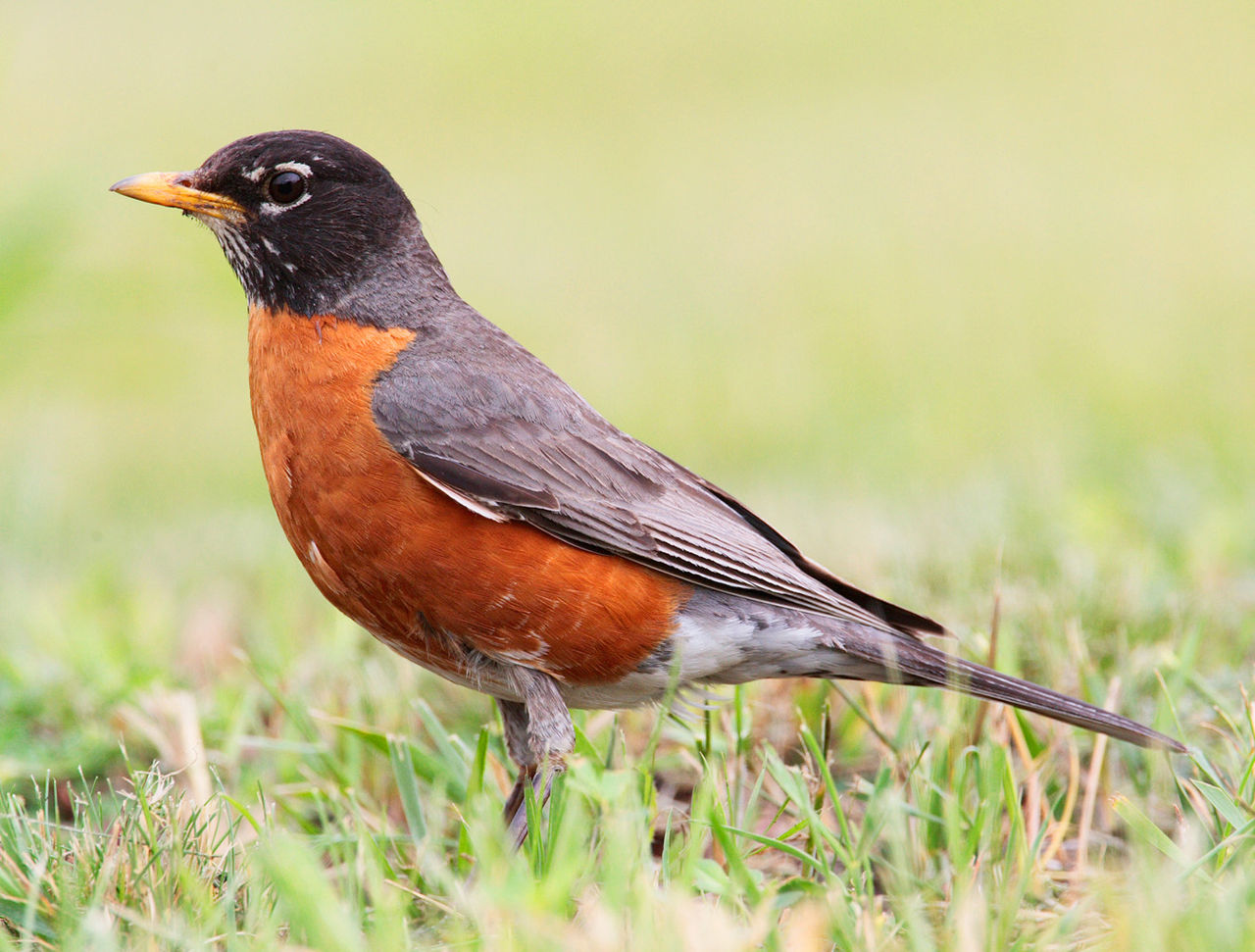 Bing Crosby, Al Jolson and many others sang the well-known song “When the red, red robin comes bob, bob, bobbing along”…… . And then there was “Rockin Robin” in the 50’s. You can go here to listen to the birds’ actual song.
Bing Crosby, Al Jolson and many others sang the well-known song “When the red, red robin comes bob, bob, bobbing along”…… . And then there was “Rockin Robin” in the 50’s. You can go here to listen to the birds’ actual song.
American mythology holds that American Robins are the first sign of spring; actually, they are around all winter in virtually all of the U.S. and even parts of Canada. Some migrate south rather than suffer the winters of the upper Midwest, but even in January you can find robins in Minnesota, Michigan and South Dakota. In the winter they forage for food and gather in big roosts at night. American Robins numbering in the hundreds or thousands can gather in one perch during the winter. As spring approaches and food becomes more abundant, the flocks start to break up and as males declare their territories, they start to sing, becoming more obvious to us, especially since they are one of the earliest nesters. During summer, while the females sleep on their nests, the males gather in roosts. As young robins become independent, they join the males in the roost. The female adult robins will join them after nesting.
At 8-11 inches in length with a wingspan of 12-16 inches, the male American robin is dark gray or brown above and reddish-orange below. The female is colored the same but duller. Young ones are brownish with a speckled breast. In the winter its fruit is mostly berries but as spring approaches, insects and worms (especially from home lawns) become a larger part of its diet. Unfortunately Robins often ingest lead left over from leaded gasoline and paint as well as other toxins from pesticides and fertilizers as contaminated soil particles adhere to the skin of worms.
Robins may have two or three broods a season. The female does the nest building, although the male might bring her some materials, making it of twigs, grass, and feathers and lining it with mud. She lays three to five bluish eggs which hatch in about two weeks.
Robins do not nest in cavities, so you can’t entice them with a birdhouse. But there are plans for nesting platforms, basically shelves with a high roof. There are so many places a robin can nest though, it’s unlikely that that alone will bring them to your yard. Bird-friendly landscaping would be the most helpful. You can get some hints on that from Cornell Lab of Ornithology.
The American Robin is a thrush and its very appropriate scientific name, Turdus migratorius, means “wandering thrush.” It’s called the American Robin to differentiate it from the European Robin after which it was named because of the reddish breast, but the European Robin is much smaller and is a flycatcher. Unlike many bird species, populations of American Robins are increasing, most likely due to the conversion of wild habitats to suburbs.